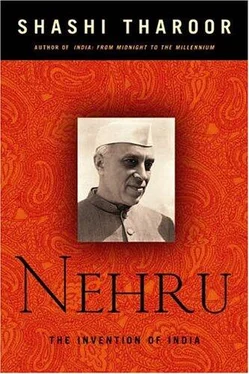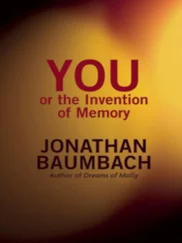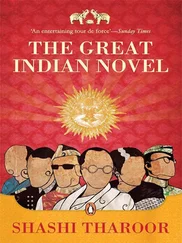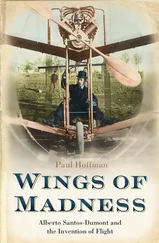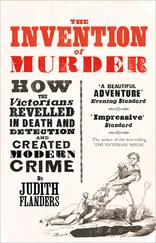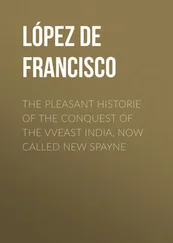Tharoor Shashi - Nehru - The Invention of India
Здесь есть возможность читать онлайн «Tharoor Shashi - Nehru - The Invention of India» весь текст электронной книги совершенно бесплатно (целиком полную версию без сокращений). В некоторых случаях можно слушать аудио, скачать через торрент в формате fb2 и присутствует краткое содержание. Год выпуска: 2004, Издательство: Arcade Publishing, Жанр: Биографии и Мемуары, на английском языке. Описание произведения, (предисловие) а так же отзывы посетителей доступны на портале библиотеки ЛибКат.
- Название:Nehru: The Invention of India
- Автор:
- Издательство:Arcade Publishing
- Жанр:
- Год:2004
- ISBN:нет данных
- Рейтинг книги:5 / 5. Голосов: 1
-
Избранное:Добавить в избранное
- Отзывы:
-
Ваша оценка:
- 100
- 1
- 2
- 3
- 4
- 5
Nehru: The Invention of India: краткое содержание, описание и аннотация
Предлагаем к чтению аннотацию, описание, краткое содержание или предисловие (зависит от того, что написал сам автор книги «Nehru: The Invention of India»). Если вы не нашли необходимую информацию о книге — напишите в комментариях, мы постараемся отыскать её.
Nehru: The Invention of India — читать онлайн бесплатно полную книгу (весь текст) целиком
Ниже представлен текст книги, разбитый по страницам. Система сохранения места последней прочитанной страницы, позволяет с удобством читать онлайн бесплатно книгу «Nehru: The Invention of India», без необходимости каждый раз заново искать на чём Вы остановились. Поставьте закладку, и сможете в любой момент перейти на страницу, на которой закончили чтение.
Интервал:
Закладка:
The Nehrus launched an extensive search within the Kashmiri Pandit community before settling on Kamala Kaul, the daughter of a flour-mill owner. When the decision was made Jawaharlal had not yet returned to India and Kamala herself was barely thirteen. Needless to say, they had never met. She spoke not a word of English, having been educated in Hindi and Urdu, and had none of the graces required for the Westernized society Jawaharlal frequented, so Motilal arranged for her to be groomed for his son by Nan’s and Betty’s English governesses. Three years of “finishing” later, on the auspicious day of Vasant Panchami, which marks the first full moon of spring, and which fell that year (1916) on February 8, Jawaharlal Nehru, twenty-six, married Kamala Kaul, ten years his junior. It was, at least in one crucial respect, a match made in heaven: Jawaharlal’s mother had insisted on comparing the astrological charts of the young couple, which a pundit she trusted assured her were compatible.
For Allahabad high society, the wedding was the grandest event of 1916 — but it took place in Delhi. Motilal rented an entire train to transport family and friends to the new capital city of India (a status Delhi had acquired, at Calcutta’s expense, in 1911), where a “Nehru marriage camp” was set up in style. The celebrations lasted a week in Delhi and were repeated in an endless round of parties, concerts, and poetry recitals in honor of the young couple when they came back to Allahabad.
Jawaharlal left Kamala behind when he went trekking and hunting with friends in Kashmir that summer and had his second narrow escape from an untimely death. Exhausted by almost twelve hours of continuous mountain climbing, and seeking to cross an ice field, Jawaharlal stepped on a pile of fresh snow: “it gave way and down I went into a huge and yawning crevasse…. But the rope held and I clutched to [ sic ] the side of the crevasse and was pulled out.”
Jawaharlal Nehru had not been saved for a life of mediocre lawyering and relentless socializing. Three years after his return to India, he was bored by both pursuits. Politics began to command more and more of his attention. For several years, the Indian National Congress had been run by the Moderates, who contented themselves with the ritual adoption of resolutions exhorting their British rulers to do better by India. While this kind of politics did not enthuse Jawaharlal, neither was he greatly inspired by the Extremists, who had split from the party and established Home Rule Leagues around the country seeking self-government for India within the Empire. But the Extremist leader Annie Besant had been an old family friend, having helped initiate him as a thirteen-year-old into theosophy. So Jawaharlal joined her Home Rule League and made his first public speech on June 20, 1916 in Mrs. Besant’s defense and in protest of the Press Act, 1under which she had been prosecuted. It was a modest performance, with no immediate consequences. Father and son attended the Lucknow Congress of 1916, where a historic Hindu-Muslim pact was concluded between the Indian National Congress and the Muslim League, a party of Muslim notables that had been established in 1905 to advance Muslim interests (though several leading Congressmen, including three of the party’s presidents to date, were themselves Muslim). But Jawaharlal did not speak at the Congress, remaining on the margins of that great (and sadly to prove evanescent) triumph of Hindu-Muslim political cooperation.
His father, however, was emerging as a major figure in the party. Motilal was named by the Congress to draft, together with a brilliant young Muslim lawyer called Mohammed Ali Jinnah, the principles that would govern cooperation with the Muslim League. Their work, recognizing the principle that decisions would not be taken affecting the interests and beliefs of a minority community without the agreement of a majority of that community’s representatives, formed the foundation of what was widely hailed as the Lucknow Pact. The Congress’s leading literary light, the poetess Sarojini Naidu, hailed Jinnah as the “ambassador of Hindu-Muslim unity” and set about editing a compilation of his speeches and writings. Nineteen-sixteen was a banner year for the nationalist movement. The fracture in the Congress between the Moderates and the Extremists had been overcome with the reentry of Tilak and Besant into the party; now the chasm between the Congress and the Muslim League appeared to have been bridged as well. Jinnah declared that, after the Great War was over, “India will have to be granted her birthright as a free, responsible and equal member of the British Empire.”
Had the British found the wisdom to embrace this demand, Jinnah might well have emerged as prime minister of an Indian Dominion within the Empire around 1918; the full independence of India from the British Raj might have been greatly delayed; Hindu-Muslim clashes leading to the partition of the country might not have occurred; and the political career of Jawaharlal Nehru might have taken a very different course. But imperial Britain had no intention of accommodating the aspirations of its Indian subjects, and it reacted to the moderate nationalism of what Jinnah called “the united India demand” by the half-hearted Montagu-Chemsford reforms, 2which even the Moderates found unacceptable, and by the more familiar method of repression.
When the outspoken Mrs. Besant was interned by the British authorities in 1917 for seditious activity, Jawaharlal abandoned any remaining hesitancy about his opposition to the British Raj in India. Though an officebearer of the provincial Home Rule League, he had considered playing a leading part in a meeting to expand an Indian Defense Force, based on the British notion of a Territorial Army, and had even applied to enlist in such a reserve; but with Annie Besant’s arrest he withdrew his application, and the meeting itself was cancelled. Instead Jawaharlal published a letter in a leading newspaper calling for noncooperation with the government. But he did not initially have a clear idea of what that would involve; in 1918 he moved a resolution at the United Provinces Political Conference criticizing the British government for its refusal to permit an Indian delegation to travel to London to argue the case for home rule. Only later did the realization dawn on him that home rule would not come about by pleading with the British. In early 1919 he signed a pledge not to obey the Anarchical and Revolutionary Crimes Act (the “Rowlatt Act”), 3and joined a committee to propagate that pledge — the satyagraha vow, as it was known. Satyagraha, or “truth force,” was a new concept in Indian nationalist politics, introduced by a thin, bespectacled lawyer wearing coarse homespun, Mohandas Karamchand Gandhi, who in 1915 had returned to India from a long sojourn in South Africa, where his “experiments with truth” and his morally charged leadership of the Indian diaspora had earned him the sobriquet of Mahatma (“Great Soul”).
Starting off as a not particularly gifted lawyer engaged by an Indian in South Africa to plead a routine case, Gandhi had developed into a formidable figure. Appalled by the racial discrimination to which his countrymen were subject in South Africa, Gandhi had embarked upon a series of legal and political actions designed to protest and overturn the iniquities the British and the Boers imposed upon Indians. After his attempts to petition the authorities for justice (and to curry their favor by organizing a volunteer ambulance brigade of Indians) had proved ineffective, Gandhi developed a unique method of resistance through civil disobedience. His talent for organization (he founded the Indian National Congress in Natal) was matched by an equally rigorous penchant for self-examination and philosophical inquiry. Instead of embracing the bourgeois comforts that his status in the Indian community of South Africa might have entitled him to, Gandhi retreated to a communal farm he established outside Durban, read Thoreau, and corresponded with the likes of Ruskin and Tolstoy, all the while seeking to arrive at an understanding of “truth” in both personal life and public affairs. The journey from petition politics to satyagraha was neither short nor easy, but having made it and then returned to his native land, the Mahatma brought to the incipient nationalist movement of India an extraordinary reputation as both saint and strategist.
Читать дальшеИнтервал:
Закладка:
Похожие книги на «Nehru: The Invention of India»
Представляем Вашему вниманию похожие книги на «Nehru: The Invention of India» списком для выбора. Мы отобрали схожую по названию и смыслу литературу в надежде предоставить читателям больше вариантов отыскать новые, интересные, ещё непрочитанные произведения.
Обсуждение, отзывы о книге «Nehru: The Invention of India» и просто собственные мнения читателей. Оставьте ваши комментарии, напишите, что Вы думаете о произведении, его смысле или главных героях. Укажите что конкретно понравилось, а что нет, и почему Вы так считаете.
